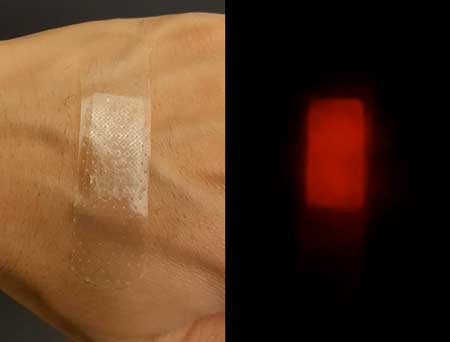Nanowerk April 19, 2018
To combine the benefits of silk and green light, an international team of researchers (USA – Purdue University, South Korea) inserted the gene for “mKate2,” a far-red fluorescent protein, into a silk host. Shining a green light on the resulting hybrid generates reactive oxygen species (ROS), which are effective radicals for breaking down organic contaminants and attacking the membrane and DNA of pathogens. When E. coli on the fluorescent silk were illuminated by a weak green light for 60 minutes, the bacteria’s survival rate dropped to 45 percent. The hybrid could be processed into a solution, film, bandage and fabric. The silk photocatalysts would be easier and environmentally safer to produce than plasmonic ones… read more. Open Access TECHNICAL ARTICLE

The processing technology of fluorescent (mKate2) silk can be applied to developing smart medical bandages for wound healing on the human skin. (Image: Jung Woo Leem, Purdue University)